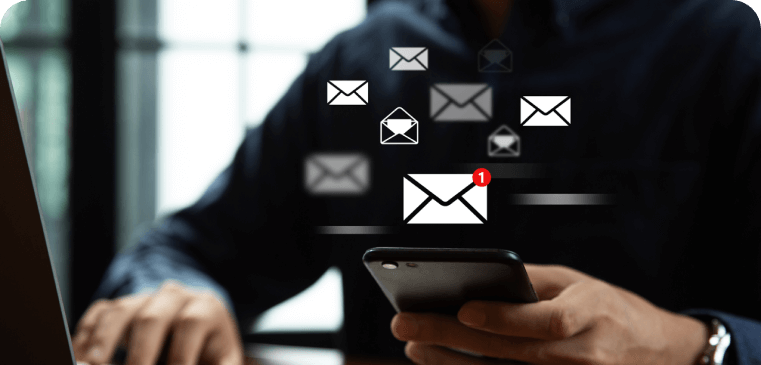- Time Management
The HR Manager's Guide to Employee Productivity Monitoring: Data Sources & Best Practices
30 Aug, 2024 |

In the quest for productivity, companies are turning to employee monitoring tools with increasing fervor. However, a growing body of evidence suggests this strategy might be doing more harm than good. While 80% of in-office companies track attendance and a staggering 37% of remote companies use video surveillance for extended periods, employee sentiment paints a different picture. Over 40% of employees are aware they are being monitored, and most of them aren't happy about it. This unease is reflected in the data, with more than half of monitored employees reporting feeling stressed at work.
The disconnect between employer intentions and employee experience is further highlighted by the fact that 73% of managers store communications to evaluate performance, yet only 30% of executives are confident in their organization's responsible use of employee data. While 68% of managers believe monitoring boosts productivity, most employees disagree. This raises important questions about the efficacy and ethics of current monitoring practices. Is the pursuit of productivity coming at the cost of employee well-being and trust? It's time for a closer look at the impact of employee monitoring and a more balanced approach that respects individual privacy and fosters a positive work environment.
.png?width=2084&height=2084&name=infographic%202-01%20(1).png)
Key Data Sources for Employee Productivity Monitoring
Time Tracking Tools
Function: These tools meticulously record how employees allocate their time across various tasks and projects. This can involve manual input, automated tracking based on app usage, or a combination of both.
Benefits:
- Time Management Insights: By analyzing the data, managers can identify patterns in how employees manage their time, pinpoint areas where time might be wasted and discover potential bottlenecks that are hindering productivity.
- Project Estimation & Planning: Historical time tracking data can be leveraged to make more accurate estimations for future projects, aiding in better planning and resource allocation.
- Billing & Payroll Accuracy: These tools ensure accuracy and transparency for businesses that bill clients based on time spent. They also ensure that payroll calculations, especially for hourly employees, are precise.
Project Management Tools
Function: They offer a centralized space for teams to manage projects, assign tasks, set deadlines, and track progress.
Benefits:
- Real-time Project Visibility: Managers and team members have a clear overview of who is working on what, task statuses, and any potential roadblocks.
- Collaboration & Communication: These tools facilitate seamless communication and collaboration within teams, ensuring everyone is on the same page.
- Performance Evaluation: By tracking task completion rates and overall project progress, managers can get a good sense of individual and team performance.
Communication and Collaboration Platforms
Function: Tools like Slack, Microsoft Teams, and Zoom are integral for team communication and collaboration, especially in remote or hybrid work environments.
Benefits:
- Communication Patterns: Analyze data to understand how teams interact, identify potential communication bottlenecks, and improve information flow.
- Knowledge Sharing & Collaboration: Assess how effectively teams are sharing knowledge and collaborating on projects.
- Meeting Effectiveness: Evaluate meeting frequency, duration, and participation to streamline communication and ensure productive use of time.

Employee Surveys and Feedback
Function: Gathering qualitative data directly from employees through surveys or feedback mechanisms.
Benefits:
- Employee Voice: Understand employee perceptions of their workload, work environment, and overall job satisfaction.
- Identify Productivity Barriers: Uncover any challenges or obstacles hindering employee productivity, such as lack of resources, unclear expectations, or workplace conflicts.
- Engagement & Morale: Regular feedback collection shows employees that their opinions are valued, increasing engagement and morale.
Performance Reviews
Function: Periodic evaluations that assess an employee's overall performance, including productivity, goal attainment, skills, and contributions to the team.
Benefits:
- Holistic Performance Assessment: Go beyond just quantitative data to get a well-rounded understanding of an employee's strengths, weaknesses, and development areas.
- Goal Setting & Alignment: Set clear expectations and goals for future performance, ensuring alignment with company objectives.
- Feedback & Recognition: Provide constructive feedback and acknowledge achievements to motivate and engage employees.
Remember: It's crucial to use these data sources ethically and transparently, ensuring employee privacy is respected. The focus should be on using insights to improve workflows, support employee growth, and foster a positive work environment where everyone can thrive.
Also Read: Performance Management Software: What Are the Benefits of PMS for Fair Appraisals
Analyzing Employee Productivity Monitoring Data
- Identify Trends and Patterns: Look for recurring patterns in employee activity data, such as peak productivity times, common distractions, and collaboration patterns.
- Compare Individual and Team Performance: Analyze individual and team data to identify high performers, potential areas for improvement, and collaboration opportunities.
- Correlate Data with Business Outcomes: Connect productivity data with key business metrics like sales, customer satisfaction, or project success to understand the impact of employee productivity on overall organizational performance.
- Respect Employee Privacy: Ensure that data collection and analysis are conducted ethically and transparently, with clear communication to employees about the purpose and use of the data.
- Use Data to Inform Decision-Making: Leverage insights from productivity monitoring data to inform decisions related to resource allocation, process improvement, employee training, and performance management.
Benefits of Effective Employee Productivity Monitoring
- Improved Performance: Identify and address productivity barriers, leading to increased efficiency and output.
- Enhanced Employee Engagement: Gain insights into employee needs and preferences, leading to improved job satisfaction and motivation.
- Optimized Resource Allocation: Make data-driven decisions about resource allocation to maximize productivity and efficiency.
- Data-Driven Performance Management: Provide employees with objective feedback and support based on performance data.
- Increased Organizational Success: Improved productivity can contribute to higher revenue, better customer satisfaction, and overall business growth.
Employee productivity monitoring, when done ethically and strategically, can provide valuable insights for organizations to optimize their workforce and achieve greater success. By leveraging a variety of data sources and analysis techniques, businesses can gain a deeper understanding of employee performance, identify areas for improvement, and create a more productive and engaged workforce. Remember, the goal of employee productivity monitoring is not to micromanage but to empower employees and support their success.
Key Takeaways:
- Employee productivity monitoring involves collecting and analyzing data from various sources to understand and optimize employee performance.
- Data sources include time-tracking tools, computer activity monitoring, project management tools, communication platforms, surveys, and performance reviews.
- Data analysis involves identifying trends, comparing performance, correlating with business outcomes, and respecting employee privacy.
- Effective employee productivity monitoring can lead to improved performance, enhanced engagement, optimized resource allocation, data-driven performance management, and increased organizational success.
- The focus should be on empowering employees and fostering a productive work environment.
Our Latest Resources
Frequently Asked Questions
Lorem Ipsum dolore
.png?width=50&height=50&name=Team%20HONO%20logo-01%20(1).png)





